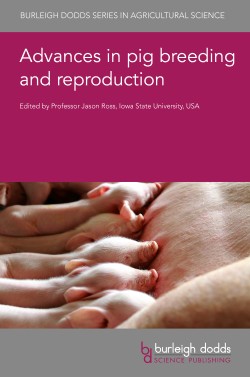 Pork is the most consumed meat worldwide and accounts for around 36% of global meat consumption. It’s therefore no surprise that the global pig sector is valued at over $250 billion.
Pork is the most consumed meat worldwide and accounts for around 36% of global meat consumption. It’s therefore no surprise that the global pig sector is valued at over $250 billion.
But despite the popularity of pork with consumers and the attractiveness of the market for investors, global pig production faces a monumental challenge – that being the threat of existing and emerging diseases.

And this threat is very real. Take the recent outbreaks of African swine fever (ASF) as an example. Since January 2022, almost two million pigs have been culled either as a result of contracting the disease or as a precautionary measure.
But with no commercially approved vaccine for ASF currently available, a greater emphasis has been placed upon the role of genetics and breeding in not only building resistance to infectious diseases, but also how general animal health and other traits can be simultaneously optimised.
“The science in these fields is advancing rapidly with new information about genetic control of disease resistance, feed efficiency and reproductive performance arriving in abundance,” says Professor David S. Buchanan, North Dakota State University, USA.
 A new book – Advances in pig breeding and reproduction – considers these significant developments and also explores how reproductive efficiency can be optimised to achieve the desired breeding outcomes.
A new book – Advances in pig breeding and reproduction – considers these significant developments and also explores how reproductive efficiency can be optimised to achieve the desired breeding outcomes.
One particular development that has helped revolutionise pig breeding programmes and the wider pig sector is the application of molecular genetic information through techniques such as genomic selection and marker-assisted selection.
“The application of these techniques increases the accuracy of the breeding value predictions and can heavily influence early selection decisions,” says Francis Dodds, Editorial Director at Burleigh Dodds Science Publishing.
“They’re also extremely beneficial for measuring particular traits which are hard to measure directly, including the likes of meat quality and disease resistance,” he adds. But optimising breeding programmes and applying conventional and molecular breeding techniques is only one half of the picture. What’s also key is gilt reproductive efficiency.
Proper gilt development and management are absolutely critical for achieving optimal reproductive performance, as is the manipulation of hormones and management of mating.
Hormonal treatments, such as PG600, GnRH analogues are used to induce and synchronise the oestrus and ovulation cycles, whilst various mating management techniques are deployed to enhance the successes of fertilisation. Examples of these techniques include artificial insemination, pen breeding and hand mating.
“Publication of a book about the advances in pig breeding and reproduction is very timely [and] includes scientists and researchers from many of the institutions at the forefront of the science of sustainable pork production,” says Professor Buchanan.
“This volume will be a valuable reference for anybody who is a serious student of the science of pigs,” he concludes.
June, 2025 - Burleigh Dodds Science Publishing


